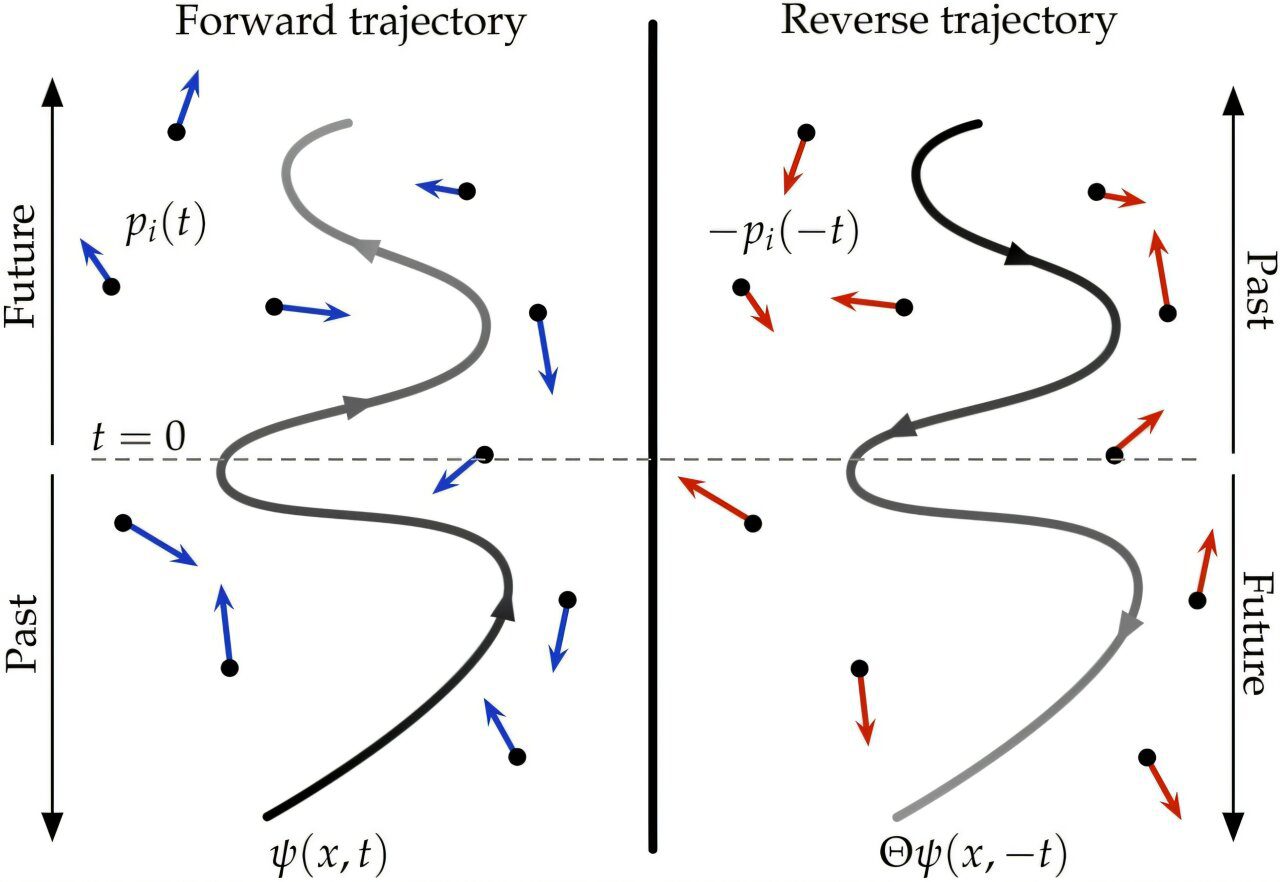
 Scientific Reports (2025). DOI: 10.1038/s41598-025-87323-x” width=”800″ height=”530″/>
Scientific Reports (2025). DOI: 10.1038/s41598-025-87323-x” width=”800″ height=”530″/>Could our understanding of time be more fluid than we realize? Researchers from the University of Surrey have raised this intriguing question, revealing through their new study that in certain quantum systems, time’s flow might not be limited to a singular direction. Instead, it may theoretically oscillate between forwards and backwards in time.
The concept of the arrow of time—the notion that it moves irreversibly from the past towards the future—has captivated scientists for centuries. Although this perspective seems self-evident in our day-to-day experiences, the fundamental laws of physics do not inherently endorse a single directional flow. Whether time progresses forward or reverses, these equations function consistently.
Dr. Andrea Rocco, an Associate Professor of Physics and Mathematical Biology at the University of Surrey, and the study’s lead author, remarked, “Consider the example of spilled milk spreading on a table; it’s evident that time is advancing. Yet, played in reverse, it’s hard to imagine milk magically gathering back into its bottle. In contrast, phenomena like a pendulum’s motion appear equally plausible when played backward. This disparity highlights a profound mystery: at the most elementary level, the physical laws do not inherently differentiate between forward and backward movement.”
Dr. Rocco added, “Our research indicates that while our everyday experiences suggest a linear progression of time, we may simply be unaware that the reverse flow could be equally likely.”
The study, which is detailed in an article published in Scientific Reports, examined the interplay between a quantum system and its surrounding environment—a scenario known as an “open quantum system.”
This research sought to clarify why we perceive time as unidirectional and whether that perception is a result of the principles governing open quantum mechanics.
To approach this complex issue, the team made two essential assumptions. Firstly, they simplified their analysis by considering only the quantum system, effectively treating the vast environment as a background element. Secondly, they posited that this environment, akin to the entire universe, is so expansive that energy and information would dissipate into it without returning.
By adopting these assumptions, they were able to explore how time can appear to flow in one direction, even while allowing for the possibility of motion in both time frames at a microscopic level.
Notably, despite these simplifications, the quantum system exhibited the same behaviors regardless of whether time was perceived as advancing or retreating. This observation lent substantial mathematical support to the concept of time-reversal symmetry playing a role in open quantum systems, suggesting that our conventional understanding of time may not be as rigid as it appears.
Thomas Guff, a postdoctoral researcher who conducted the calculations, stated, “What surprised us most was that even after applying our standard assumptions to the equations governing open quantum systems, the results remained consistent whether time moved forward or backward.”
He continued, “Upon meticulous examination of the mathematics, we recognized that this behavior was mandatory due to a critical component of the equations, the ‘memory kernel,’ which exhibits time symmetry.”
“Additionally, we uncovered a small but significant detail—an intermittent factor emerged that preserves the time-symmetry characteristic. Such a mathematical aspect is uncommon within a physics equation due to its discontinuous nature, making its natural emergence particularly surprising.”
This research provides a novel perspective on one of physics’ most profound enigmas. Gaining deeper insights into the essence of time could carry significant implications across quantum mechanics, cosmology, and beyond.
For further details:
Thomas Guff et al, Emergence of opposing arrows of time in open quantum systems, Scientific Reports (2025). DOI: 10.1038/s41598-025-87323-x
Provided by
University of Surrey
Citation:
Physicists reveal potential evidence of dual arrows of time arising from the quantum domain (2025, February 13)
retrieved 14 February 2025
from https://phys.org/news/2025-02-physicists-uncover-evidence-arrows-emerging.html
This document is subject to copyright. Aside from any fair use for personal study or research, reproduction is prohibited without written consent. The content is intended for informational purposes only.









